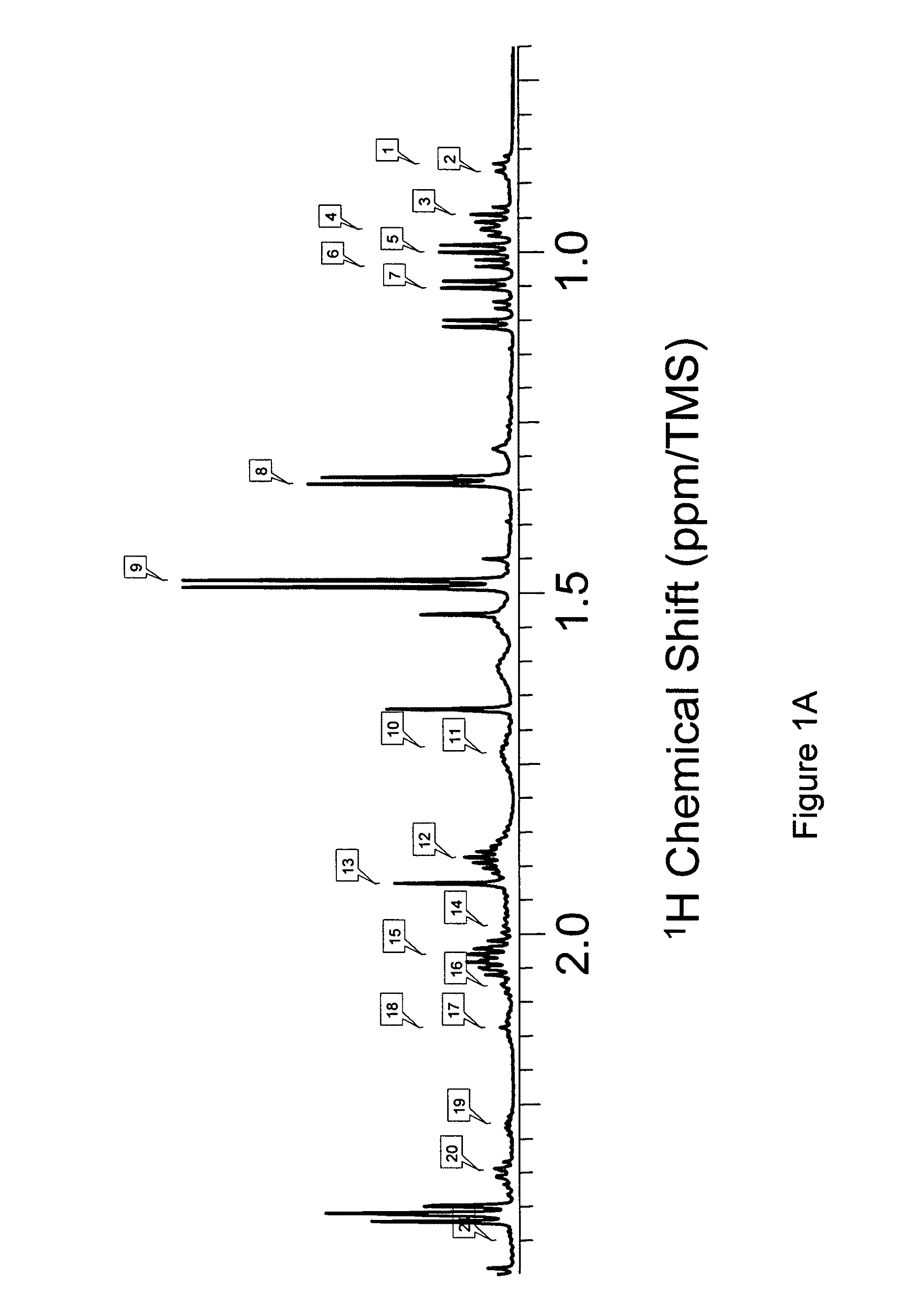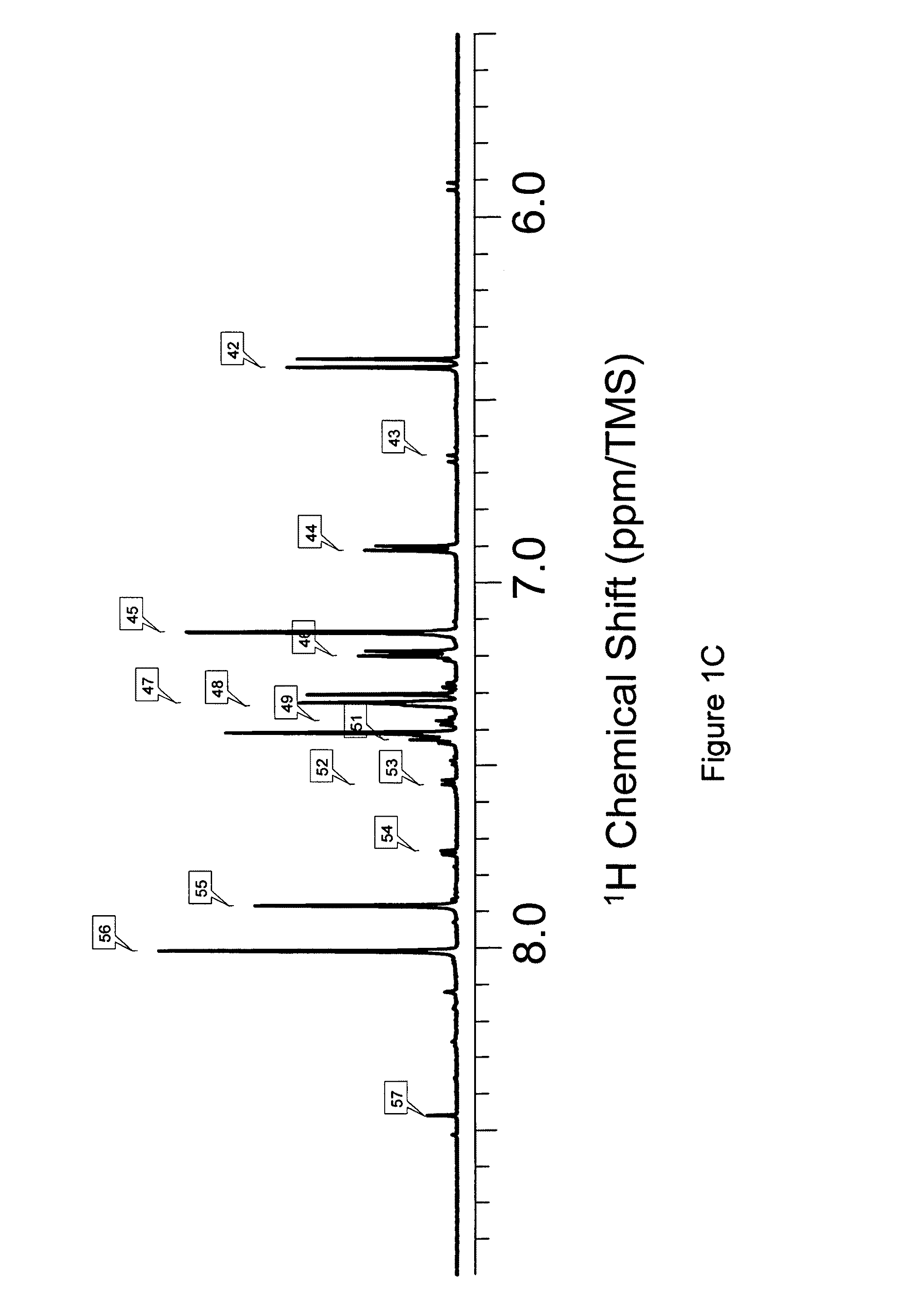Metabonomic methods to assess health of skin
a skin health and metabolite technology, applied in the field of skin health assessing methods, can solve the problems of dermatological responses, further hindering studies, low and unpredictable frequency, etc., and achieves the effects of reducing variation, increasing the level of metabolites, and reducing variation
- Summary
- Abstract
- Description
- Claims
- Application Information
AI Technical Summary
Benefits of technology
Problems solved by technology
Method used
Image
Examples
example 1
Normal vs. Occluded Skin
[0068]Occlusion induced skin changes may not be easily or reproducibly evaluated by visual grading. Furthermore, the visual grading will not provide critical information needed in order to understand and predict skin responses to certain treatments and to create measures to maintain or promote skin health. Sensitive techniques with high resolving power are needed to analyze skin at the molecular level.
[0069]Skin samples are collected from a clinical study that is carried out on adult arms. Each arm has two of the three sites assigned to treatment with either a fully occlusive patch (Saran Wrap®) or a patch prepared from a more breathable material, such as a Hytrel film (Dupont), with a low moisture vapor transmission rate (MVTR) of about 350 g / m2 / 24 hours. The third site is a non-occluded control. The area of the skin where a patch will be placed is marked. The treatment patch is placed on the skin and secured to the skin with Tegaderm tape (3M). Each patch s...
example 2
Identification of Skin Metabolites
[0072]Skin metabolites that respond to occlusion are identified using various approaches. Samples from occluded and control skin are collected following the same method described in Example 1.
[0073]The skin strips are extracted with water and then analyzed by capLC-MS / MS (LCQ LC-MS / MS system (ThermoFinnigan) with 173A Microblotter-Capillary LC system (Applied Biosystems) and a 0.5 mm×15 cm C18 capillary column (Perkin Elmer). Comparison of the MS data reveal a unique signal with m / z 139 whose intensity is elevated in occluded skin. Exact mass measurement of the peak indicates a molecular ion of m / z 139.0518 with a possible molecular formula of C6H6N2O2. There are several possible structures with the same molecular formula and similar mass spectra.
[0074]Several known compounds are tested having these characteristics using MS / MS, and urocanic acid is identified as the biomarker in the occluded skin. Urocanic acid (UCA) is a natural component in the st...
example 3
Sample Variation Effects on Metabolite Profiles
[0080]Metabolite variations among skin type, depth, site, and time from washing are assessed. Five different sites from an adult forearm are stripped once using D-Squame™ tapes one hour after washing. The same five sites are stripped again six hours after the first tape stripping. An additional set of samples are tape stripped consecutively ten times from a separate site for skin depth profile study. Skin depth samples are also collected from another individual. The samples are extracted by placing a single skin strip in a glass vial, adding 1 mL water and sonicating the vial for 30 min. The sample extracts are dried under nitrogen (N2) and are reconstituted in 200 μL of 200 mM sodium phosphate containing 0.1% (w / v) sodium azide in D2O at pH 7.4, and transferred to a 2 mm capillary tube capped with a Teflon™ fixture. The capillary tube is inserted into a NMR micro sample tube assembly (5 mm tube with 3 mm stem, from NewEra (New Jersey))...
PUM
 Login to View More
Login to View More Abstract
Description
Claims
Application Information
 Login to View More
Login to View More - R&D
- Intellectual Property
- Life Sciences
- Materials
- Tech Scout
- Unparalleled Data Quality
- Higher Quality Content
- 60% Fewer Hallucinations
Browse by: Latest US Patents, China's latest patents, Technical Efficacy Thesaurus, Application Domain, Technology Topic, Popular Technical Reports.
© 2025 PatSnap. All rights reserved.Legal|Privacy policy|Modern Slavery Act Transparency Statement|Sitemap|About US| Contact US: help@patsnap.com



